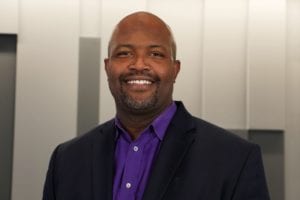Who is a member?
Our members are the local governments of Massachusetts and their elected and appointed leadership.

Leon Andrews
Local leaders across the country are finding new ways to increase employee diversity and adopt equitable policies to better reflect and serve their communities.
Communities are diversifying, and many cities and towns are trying to ensure that their workforces reflect that diversity. As chief diversity officer for the city of Boston, Danielson Tavares partners with community, academic and business groups to develop hiring processes that ensure opportunities and advancement for candidates from underrepresented populations.
In cities where residents are experiencing discrimination, a chief diversity officer can make them feel they have a voice. It’s one way for cities to better represent their constituents. But hiring a chief diversity officer is just part of what’s required to build more equitable communities in municipalities.
The National League of Cities’ Race, Equity And Leadership (REAL) program is committed to creating a nation in which every local official is equipped to effectively lead and serve an inclusive, thriving and healthy community.
Institutions and structures have historically created, and continue to perpetuate, racial inequities throughout cities and towns, often unintentionally. Tackling issues related to racial inequity in your city or town can seem like a daunting task, but the following are six steps to get you started on the road to improving outcomes for all residents.
1. Set an example and strike the right tone: Mayors, councillors, town managers and selectboard members can set an example and commit themselves to prioritizing racial equity, by participating in equity leadership trainings or starting a community conversation to engage voices throughout the community.
2. Observe and listen: Without a doubt, there are already many voices promoting racial equity within your community. One of the easiest and first things you can do is to simply observe and listen to those voices but also to the data.
3. Make a public declaration: As with instituting any city- or town-wide initiative, leaders can leverage the bully pulpit and media attention to make constituents aware of the city’s priorities and efforts – and build connections between communities of color and governing bodies.
4. Dedicate infrastructure to action: Building a team and developing staff skills to address the impacts of racism throughout local government are necessary steps toward achieving real progress. Local elected officials need to provide the leadership to generate a community-wide coordinated effort and infrastructure to carry out these functions.
5. Commit to policy and system change: Local leaders have the responsibility as chief policymakers to address the ways in which institutional and structural racism have shaped their community.
6. Create a racial equity plan: Each city department or bureau can create action plans targeted by issue area. By combining those action plans, cities and towns create an institutional road map that continues beyond leadership transitions.
The National League of Cities provides resources and technical support to strengthen local elected officials’ knowledge and capacity to eliminate racial disparities, heal racial divisions, and build more equitable communities. REAL recently released an action guide for municipalities responding to racial tension, and provides an online repository of concrete policy and budgetary changes local elected officials have made to prioritize racial equity in their cities and towns.
Each community’s challenges are unique. REAL is on the ground working with local leaders to find local solutions and develop tailored plans to assist each community in countering structural racism.
To learn more about the services provided by REAL and its work in communities, visit nlc.org/real or send an email to andrews@nlc.org.
Leon Andrews Jr. is director of the National League of Cities’ Race, Equity And Leadership (REAL) department. He will be the closing session speaker on Jan. 25 at the MMA Annual Meeting & Trade Show, where he will also visit the annual business meetings of the Massachusetts Municipal Management Association and the Massachusetts Municipal Councillors’ Association.